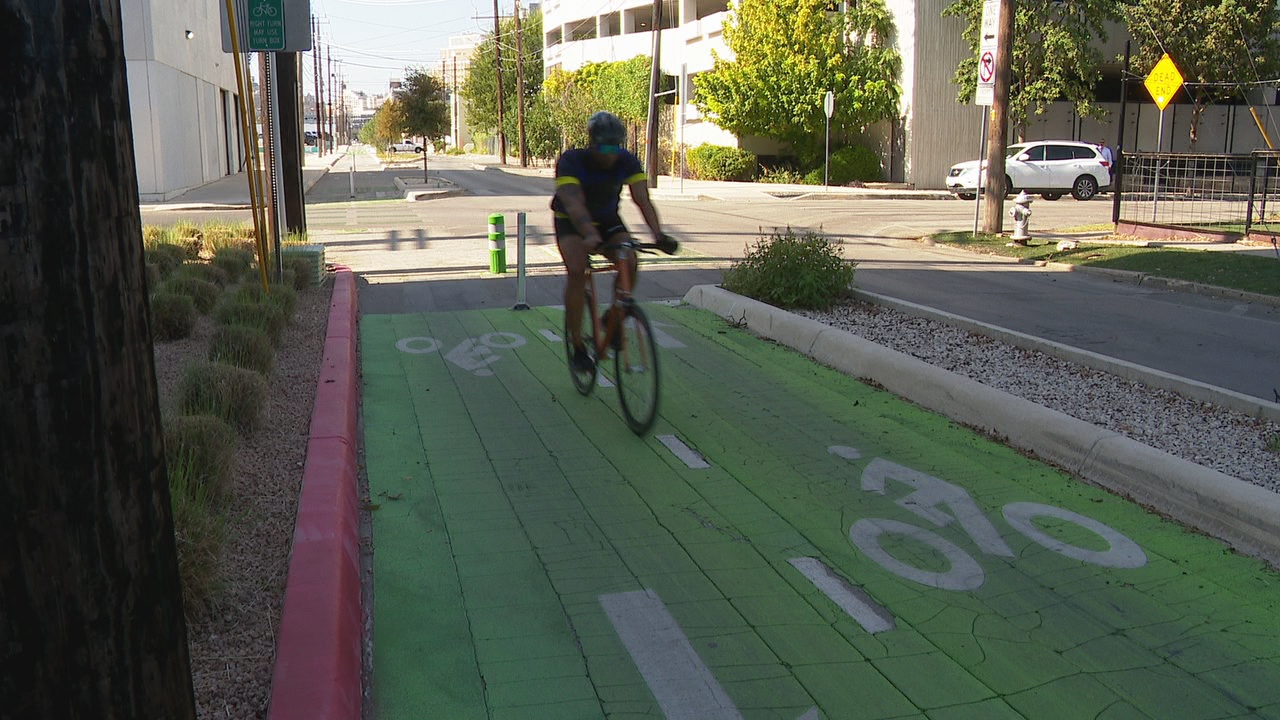SAN ANTONIO – The city is spending $16 million of your tax dollars to build less than a mile of bike lanes through downtown. Some cyclists are thrilled with the idea, but opponents say it’s too expensive and takes away lanes needed for cars.
It’s called a cycle track, a wider bike lane that allows cyclists to ride in both directions on the roadway. We already have one on Avenue B near the Pearl. But now the city is building one on two of the busiest streets through downtown.
Cyclist Jozaier Duglas uses an existing cycle track and supports building the new section because he thinks it will encourage more people to ride bikes.
“I think that would be a great plan, San Antonio is a great city for cycling,” said Duglas.
The proposed cycle track will run from city hall to the convention center, along busy Market Street, then up South Alamo, and then along Commerce all the way to I-37. It’s nearly one mile, at a cost of $16 million.
“You can build a whole lot of highway lane miles and expand a lot of congested roads with that money instead, so it’s really a poor use of taxpayer money, and it’s really part of this anti-car push,” said Terri Hall of Texans Uniting for Reform and Freedom.
Hall advocates for road projects that focus on cars and she calls the bike lanes a “road diet” project.
That’s because on Market Street the four existing lanes for auto traffic will be cut down to just three, to make room for the two-way cycle track.
Along Commerce Street the far lane used for parking or making left turns will be eliminated to accommodate the track.
“This is a push by the anti-car crowd to make it miserable for you to drive, to make you have to stop at all the lights, to make you have less road space, and to snarl up traffic,” Hall said.
Her group backed legislation in Austin this year that would have cracked down on so-called “road diet” projects, that use taxpayer money to reduce traffic lanes in favor of bike or bus lanes.
But the legislation failed to pass.
The city would not comment on-camera, but its website says: “the cycle tracks, upgraded traffic signals, and lighting will provide a safer, more comfortable ride and commute for our most vulnerable road users in the core of downtown.”
“Sometimes it’s not so much about how much it costs, it’s about how much it’s worth,” said Duglas.
The $16 million comes from federal funds distributed by TxDOT to the city. The track is being designed, and construction won’t start until 2027.

